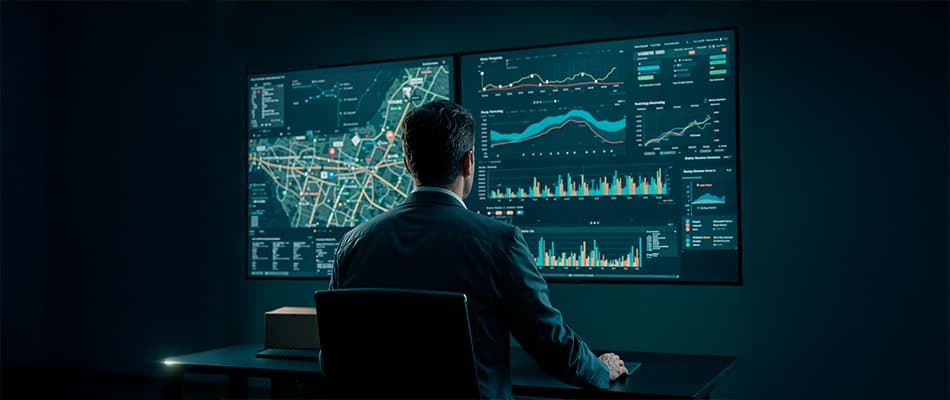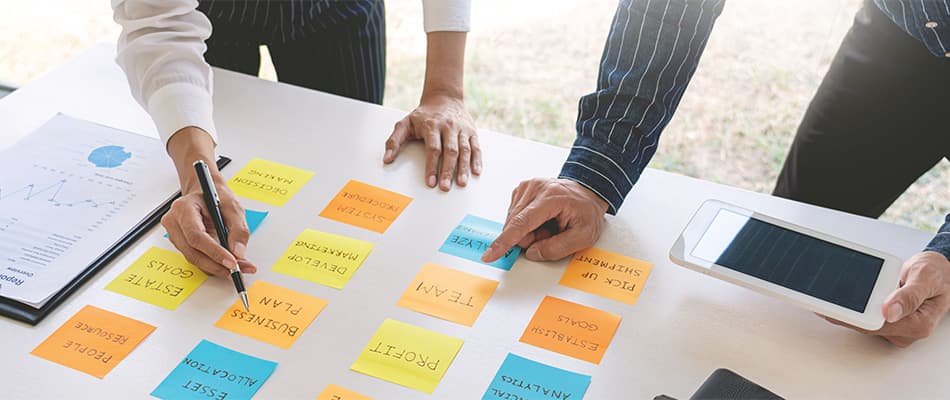Learn How to Design a Prototype Product: Explore Its Types, Purpose, and Steps to Design
Designing a prototype is an important step in turning an idea into reality. A prototype helps you test your concept, identify potential issues, and understand how your product might function or look. Learning how to design a prototype product can give you a clear direction to refine your idea and make it practical. This process involves creating a model or sample that represents your product. Whether you are working on a new gadget, software, or consumer item, a prototype is essential to evaluate its usability and design. With the right tools and steps, anyone can develop a prototype that communicates their vision effectively.
In this guide, we will explore the steps to create a prototype, the tools you can use, and the common challenges you may face. By the end, you’ll be ready to start working on your first prototype.
What is a Prototype?
A prototype is a preliminary model or sample of a product created to test its concept, design, and functionality. It serves as a practical way to understand how the product might work or look before final production. Knowing how to design a prototype product allows creators to refine their ideas and make informed decisions. Prototyping bridges the gap between an idea and its final implementation.
Purpose of Prototypes
Prototypes serve as early models of a product, allowing designers and developers to test concepts and ideas. They help identify any flaws or issues before production begins, saving time and resources. Let’s understand the purpose of prototypes in the following points.
- Visualise the Product Concept
A prototype helps transform abstract ideas into a physical or digital representation. It allows creators to communicate their vision clearly and gain a better understanding of the final product. - Gather User Feedback
Prototypes enable testing with real users to evaluate if the product meets their needs. This process helps identify improvements and ensures the design aligns with user expectations. - Identify Potential Issues in Early
Prototyping highlights design flaws, technical limitations, and usability challenges before investing in full-scale production. Addressing these issues early saves time, effort, and costs in later stages.
Types of Prototypes
There are various types of prototypes, each designed for specific stages of development. Some prototypes are used to test functionality, while others focus on the overall design or user experience. Below are some common types of prototypes you should be aware of:
- Low-Fidelity Prototypes
These are basic models, like sketches or wireframes, focusing on layout and structure. They are quick to create and ideal for exploring early ideas and concepts. - High-Fidelity Prototypes
High-fidelity models are detailed and often interactive, closely resembling the final product. They are used to test functionality, design, and user experience in advanced stages of development. - Throwaway or Rapid Prototypes
These prototypes are built quickly to represent only the basic features of the product. Once feedback is gathered, they are discarded, and a new version is created with the updated requirements. - Evolutionary Prototypes
These are continually improved based on user feedback. Instead of being discarded, they evolve throughout the development process, allowing for changes and enhancements as more is learned. - Parallel Prototypes
Multiple prototypes are built simultaneously, each with different features or design approaches. This allows the testing of different ideas or concepts at the same time. - Incremental Prototypes
The product is built in parts, with each prototype representing a portion of the final product. Over time, these parts are integrated into a complete product.
Why is Prototyping Essential in Product Design?
Prototyping is an important step in creating a successful product. It allows designers to turn ideas into tangible models that can be tested and refined. By understanding how to design a prototype product, you can ensure the final version is user-friendly and meets expectations. Prototypes act as a bridge between concept and production, helping to identify and solve issues early.
Importance of Prototypes
- Reduces Risk: Prototyping helps detect design or functionality flaws before production. This saves time, effort, and money by addressing problems during the early stages.
- Enhances Collaboration: Prototypes provide a clear visual model that teams and stakeholders can discuss. This makes it easier to share ideas, identify improvements, and agree on changes.
- Improves User Experience: By testing prototypes with users, you can gather insights on their preferences and needs. This feedback ensures the final product delivers better satisfaction.
- Speeds Up Development: Prototypes create a clear framework for designers and developers. They provide a visual and functional guide, helping teams work more effectively toward the final product.
Step-by-Step Guide to Designing a Prototype Product
Creating a prototype is essential for turning an idea into a tangible product. By learning how to design a prototype product, you can evaluate its functionality, identify issues, and improve its design before final production. This process involves several key steps, each of which plays an important role in ensuring the success of the product. Here’s a simple guide to help you design a prototype product step by step.
1. Research Your Idea
Before starting, learn about similar products. This helps you understand how your idea compares and what makes it unique. Research can also uncover how existing products are made, what materials they use, and how they function. This step ensures your idea is practical and fills a gap in the market.
2. Sketch Your Design
A key part of learning how to design a prototype product is creating sketches. Draw your product on paper or using software. Start with rough sketches to explore different ideas, then refine them into detailed drawings. Think about how the product will look and work. This step helps you visualise your idea and plan its features.
3. Create a Virtual Model
Use 3D modelling software to make a digital version of your design. A virtual model allows you to see how the product will look and function without building it yet. You can also test the design for potential issues and make adjustments before moving forward.
4. Check Feasibility
Evaluate if your design can be made with available materials, within budget, and using current manufacturing methods. Consider factors like cost, time, and any legal requirements. This step ensures your prototype is realistic and achievable.
5. Build a Proof of Concept
If you’re wondering how to design a prototype product, building a proof of concept is an essential step. Create a basic version of your product to test its functionality. This doesn’t need to look perfect but should demonstrate how it works. For example, if your product has moving parts, ensure they operate as intended. This step helps identify any major design flaws early on.
6. Develop the Physical Prototype
Using tools like 3D printers or other manufacturing methods, create a physical version of your product based on the refined design. This prototype should combine both appearance and functionality so you can see how it performs in real life.
7. Test Your Prototype
Test the prototype thoroughly to ensure it works as expected. Check for usability, durability, and performance under different conditions. Testing helps identify areas that need improvement.
8. Gather Feedback
Share the prototype with potential users or industry experts to gather their opinions. Ask questions about what they like, what could be improved, and whether the product meets their needs. Feedback is crucial for refining your design.
9. Refine and Iterate
Refining is one of the most important steps when learning how to design a prototype product. Based on feedback and test results, make changes to improve the prototype. You may need to repeat some steps (like sketching or creating another physical model) until you’re satisfied with the result.
10. Prepare for Production
Once you’re satisfied with the final version, create a production-ready prototype that closely resembles the final product in materials and functionality. Work with manufacturers to ensure it can be mass-produced efficiently.
11. Document Everything
Keep detailed records of all steps, changes, and decisions made during the prototyping process. This documentation will help during production and when presenting your product to investors or partners.
Tools and Resources for Prototyping
Creating a prototype requires the right tools and resources to bring your ideas to life. These tools help refine designs, test usability, and improve functionality. Whether designing a digital or physical product, choosing the right platform is crucial when learning how to design a prototype product. Below are some essential tools and resources for effective prototyping.
1. Design Software
Tools like Figma, Adobe XD, and Axure RP offer versatile options for digital prototyping. Figma enables real-time collaboration, Adobe XD supports interactive features, and Axure RP adds advanced functionality, helping teams create functional, visually appealing prototypes efficiently.
2. Physical Prototyping Tools
3D printers, Computer Numerical Control (CNC) machines, and laser cutters are essential for physical prototypes. 3D printers test design dimensions, CNC machines ensure precision and laser cutters create intricate designs, bringing physical prototypes to life with accuracy and speed.
3. Collaborative Platforms
Tools like Miro, Notion, and Trello enhance team collaboration in prototyping. Miro supports brainstorming, Notion combines task management with document sharing, and Trello tracks tasks, ensuring smooth, organised teamwork throughout the prototyping process.
Challenges in Prototyping
Designing a prototype comes with challenges that can impact the process and outcome. These issues may involve resources, design complexity, or interpreting user feedback. Identifying and addressing these problems is crucial when learning how to design a prototype product. Below are some common challenges and ways to tackle them.
- Resource Constraints: Prototyping can be costly, especially with advanced tools. To stay within budget, use low-cost alternatives like paper or basic digital tools and prioritise essential features to maintain quality.
- Balancing Complexity: Striking a balance between simplicity and detail is crucial. Over-designing can complicate prototypes while under-designing may omit vital features. Focus on core goals, starting simple and adding complexity as needed.
- User Feedback Interpretation: User feedback is vital but can be subjective. Focus on recurring themes and prioritise changes with the greatest impact. Multiple testing rounds ensure the prototype meets user needs effectively.
Best Practices for Prototyping Success
Creating a prototype involves more than just assembling parts; it requires strategic planning and testing. Understanding how to design a prototype product means focusing on proven practices that ensure functionality and usability. It’s also important to iterate and improve the prototype based on feedback and testing results. By following these best practices, you can create a product that meets both user needs and business goals. Below are some best practices to follow:
- Start Small
Begin with low-fidelity prototypes, such as sketches or wireframes. These are cost-effective and quick to develop, allowing you to test basic ideas. This approach saves resources while ensuring you refine the concept before moving to more complex models. - Involve Stakeholders Early
Collaboration is crucial. Engage stakeholders, including team members, investors, and users, to ensure alignment with project goals. Early involvement helps address concerns before escalating, smoother the prototyping process. - Focus on User Needs
Always design with the end user in mind. Understand their pain points and preferences to ensure the prototype addresses these needs effectively. Keeping the user at the centre ensures the final product meets expectations. - Test Continuously
Testing should be an ongoing process. Prototype designs should be tested in various conditions to gather feedback. Continuous iteration allows you to refine the prototype and avoid potential issues.
Applications of Prototyping Across Industries
Prototyping isn’t limited to one field. Designing a prototype product can benefit various industries by improving processes and products. It helps businesses test ideas quickly, reduce costs, and make informed decisions. Below are some of the most common applications:
- Technology
Prototyping is integral to app and software development. Designers use it to test features, user flows, and functionality. This industry often uses tools like Figma and Adobe XD to create digital prototypes. - Healthcare
Medical devices and patient interfaces undergo rigorous prototyping to ensure they are safe and effective. Early models allow usability testing, ensuring they meet the required standards before large-scale production. - Retail
Retail businesses use prototypes for product packaging and designing online store interfaces. Prototyping helps brands create attractive packaging and user-friendly e-commerce sites. - Automotive
The automotive industry relies heavily on prototyping to design and test new vehicle models. Prototypes allow manufacturers to address issues before full-scale production, from aerodynamic testing to interior functionality.
Why Choose Digital Regenesys For a Certification Course in Product Management?
Digital Regenesys’s Product Management course equips you with the skills to excel in product lifecycle management, market research, and agile practices. Designed for both beginners and experienced professionals, this 26-week course offers practical training, live sessions, and a globally recognised certification.
Benefits of Enrolling in Digital Regenesys’ Product Management Course:
- Comprehensive Curriculum: Covers product strategy, customer insights, business model design, financial analysis, and product road mapping.
- Hands-On Experience: Work on real-world projects with advanced tools like Mixpanel, Jira, and Figma.
- Expert Guidance: Learn from experienced instructors and industry professionals.
- Flexible Learning: Get the benefit of one year of online learning, weekend classes, and access to materials.
- Career Boost: Globally recognised certification and career counselling.
In conclusion, learning how to design a prototype product is a crucial step in turning your ideas into tangible solutions. Creating prototypes helps you visualise what your product might look like and allows you to spot any potential problems early on. By gathering feedback from users, you can make improvements to the design. This process helps you refine your concept and make necessary changes before investing too much time or resources. Prototyping not only improves your design but also saves time and resources by addressing issues early. At last, mastering prototyping techniques is essential for successful product development.
Visit the Digital Regenesys website to learn more about our Product Management Course!
How to Design a Prototype? – FAQs
What is the first step in how to design a prototype product?
The first step in designing a prototype product is researching your idea. This helps you understand similar products and identify gaps in the market.
How do I choose the right tools for how to make a product prototype?
Select tools based on your product type, like Figma for digital designs or CAD software for physical prototypes, depending on your project needs.
What materials are best for how to create a prototype product?
Basic materials like paper or wireframes are used for low-fidelity prototypes, and 3D printing or CAD software is used for high-fidelity and functional prototypes.
How does user feedback help in how to design a prototype product?
User feedback identifies design flaws and functionality issues, guiding adjustments to improve usability and ensure the product meets real-world needs.
What is the difference between a product prototype and a final product?
Prototypes are models for testing ideas, while the final product is the fully developed, mass-produced version after refining the prototype.














